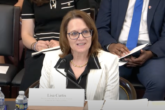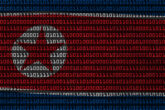October 15, 2014
An Agenda for the U.S.-ROK Security Consultative Meeting
In the past week, a whirlwind of stories on North Korea has emerged. Most of the news media reporting on the most secretive country in the world relates to three events:
The Case of the Missing Dictator
The 40-day long absence of Kim Jong-Un from public, most notably his apparent failure to visit the Kumsusan mausoleum on Friday to mark the 69th anniversary of the founding of the Workers’ Party of Korea (KWP), has dominated news media lately. Some experts theorized that Kim’s month-long disappearance was a sign that he was no longer in power. Although Kim’s supposed reemergence refutes the notions that a coup or transition in power occurred, his disappearance raises the real prospect of discontinuity in the top echelons of leadership.
Surprise, Guess Who’s in Town?
Last week, a North Korean delegation comprised of high-level officials including the No. 2 in Pyongyang, Hwang Pyong-so made a surprise visit to South Korea to attend the closing ceremony of the Asian Games. The trip culminated in both Koreas agreeing to “hold the 2nd Inter-Korea High-level talks,” following up on a meeting held in February which resulted in family reunions as part of the DPRK’s charm offensive. The unexpected but welcomed visit has many hoping that this marks a thaw in inter-Korean relations.
Exchanging Fire
However, hopes for improved relations between the two countries were quickly dampened when navy patrol boats exchanged fire near the Northern Limit Line (NLL) earlier last week. Furthermore, the Koreas exchanged cross-border fire on Friday when South Korean activists launched “balloons loaded with leaflets criticizing the Pyongyang government.” This renewed aggression, albeit relatively benign/small, may mark the beginning of continued escalatory behavior. Although the two Koreas met in Panmunjom today to discuss the recent skirmishes last week, the talks unsurprisingly resulted in no resolution or agreement.
These stories may tell us little about the true state of affairs inside the secretive state, but these three trends should be on the agenda when the United States and South Korea meet later this month for their annual Security Consultative Meeting (SCM). Specifically, the alliance needs to think through contingency plans for each of them. Though Seoul and Washington have previously discussed these issues, the spate of recent events only serve to further emphasize the importance of such contingency planning and remind policymakers that changes to the status quo are not abstract.
While it is almost impossible to predict what would occur if there was a transition in power, a regime change could fundamentally alter the political and security environment in Northeast Asia. Therefore, Washington and Seoul must work together in formulating policies to address instability on the peninsula. One concrete issue the two allies can cooperate on is the transfer of wartime operational control (OPCON). Originally, OPCON transfer was scheduled to occur in December 2015. However, South Korea has requested a delay in regaining wartime control due to North Korea’s provocative behavior and concerns about their lack of C4ISR and other capabilities needed in the event of war. A compromise between the two allies could be to delay a conditions-based (as opposed to an arbitrary deadline-based) OPCON transfer indefinitely; in the meantime, the United States would continue to fortify South Korea’s defense capabilities.
If Pyongyang were to engage in a charm offensive policy and it is actually effective, this could change how other countries interact with North Korea. For example, if North Korea were to agree to enlarge Kaesong Industrial Park, resume family reunions with South Korea, or provide credible movement on Japanese abductions, this would put pressure on the United States and South Korea to reciprocate the good will. However, it is more likely that North Korea continues its smarm offensive approach, making minor concessions while continuing to build up its nuclear and missile facilities. Good relations between North Korea and the rest of the world creates a diplomatic conundrum for U.S. policymakers: how can Washington achieve its objective of a denuclearized North Korea while simultaneously allowing space for North Korea’s positive actions?
Escalation between the two Koreas could lead to heightened tensions and instability on the peninsula. Similar to the regime change scenario, the alliance should enhance military relations, build up South Korea’s unilateral defense capabilities, and ease regional security tensions. At the SCM this month, officials should discuss implementing and integrating a ballistic missile defense system. Though the South Korea-Japan relationship is fraught with obstacles, security cooperation via intelligence sharing between the neighboring countries and U.S.-South Korea-Japan trilateral contingency planning is important for regional security.
Although Kim Jong Un’s reappearance puts an end to the media frenzy and speculation surrounding his absence, his disappearing act not only highlights how little is known about the totalitarian country but also how any change could upset the delicate status quo. This dangerous combination reiterates the importance of regional and alliance cooperation. The upcoming SCM between the United States and South Korea provides an opportunity for the alliance to preemptively and proactively discuss plans in addressing potential instability in the region.
More from CNAS
-
Assessing the Terror Threat Landscape in South and Central Asia and Examining Opportunities for Cooperation
Watch...
By Lisa Curtis
-
Indo-Pacific Security / Energy, Economics & Security
What Will North Korean Cybercrime Look Like in 2022?North Korean hackers will likely continue to employ more phishing campaigns in the future while tailoring their level of obfuscation based on the target’s sophistication....
By Jason Bartlett
-
Duyeon Kim testifies before European Parliament's Committee on Foreign Affairs
Chairman McAllister, Vice Chairs, DKOR Chairman Mandl, and distinguished Members of the Committee on Foreign Affairs and the European Parliament, thank you for the opportunity...
By Dr. Duyeon Kim
-
China’s New Land Borders Law Is a Nightmare for North Korean Refugees
A combination of high-level pressure from foreign governments and steady support for grassroots refugee resettlement organizations and programs is the most practical way to as...
By Jason Bartlett


